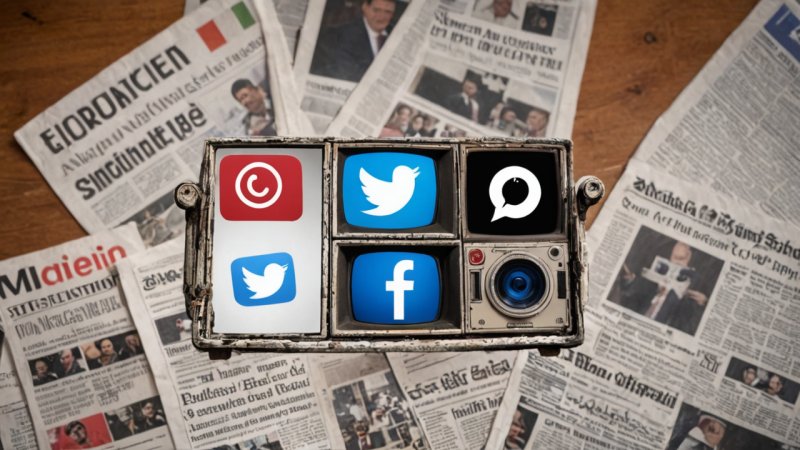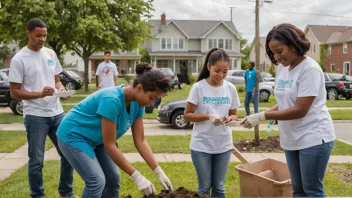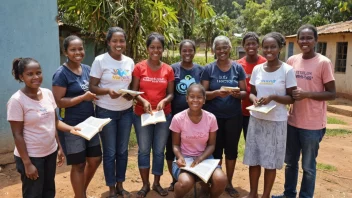In today's interconnected world, the landscape of humanitarian aid mobilization has dramatically transformed with the rise of social media. While traditional media platforms such as television, radio, and newspapers have played a critical role in disseminating information and raising awareness for humanitarian efforts, social media has introduced new dynamics that empower individuals and organizations to engage directly with global issues. This article explores the comparative advantages and disadvantages of social media and traditional media in mobilizing humanitarian aid, offering insights into their effectiveness, reach, and engagement.
Reach and Accessibility
One of the most significant differences between social media and traditional media is their reach and accessibility. Social media platforms, such as Facebook, Twitter, and Instagram, have billions of active users worldwide, making them powerful tools for spreading messages quickly and broadly.
In contrast, traditional media is often limited by geographic and demographic boundaries. While television and radio broadcasts can reach large audiences, they may not penetrate remote areas or engage younger demographics who prefer online content. Furthermore, social media is accessible to anyone with an internet connection, enabling grassroots movements and local organizations to share their stories and needs.
Pros of Social Media
- Wider Audience: Social media can reach a global audience instantaneously.
- Real-time Updates: Information can be shared and updated in real-time, allowing for immediate responses to crises.
- Engagement: Users can interact with content, share their experiences, and mobilize their networks.
Cons of Social Media
- Information Overload: The sheer volume of content can make it challenging for important messages to stand out.
- Spread of Misinformation: False information can circulate rapidly, potentially leading to confusion or harm.
- Digital Divide: Not everyone has access to the internet, leaving some communities without the benefits of social media.
Credibility and Trust
Credibility is another crucial factor when comparing social media and traditional media in the context of humanitarian aid. Traditional media outlets typically adhere to established journalistic standards, often employing professional reporters and fact-checkers. This can enhance trust in the information presented.
On the other hand, social media content can vary significantly in credibility. While many organizations use social media to share accurate information, the platform is also rife with unverified posts and personal opinions that may not be factual. This inconsistency can lead to skepticism among audiences regarding the authenticity of the information shared.
Pros of Traditional Media
- Established Credibility: Reputable news organizations are generally trusted sources for information.
- Fact-Checking: Traditional media often employs rigorous fact-checking processes.
- Thorough Coverage: In-depth reporting can provide comprehensive insights into complex issues.
Cons of Traditional Media
- Limited Interaction: Audiences are passive consumers of news and cannot engage directly with the content.
- Delayed Reporting: News cycles can be slower, leading to outdated information during fast-moving crises.
- Accessibility Issues: Not everyone has access to traditional media outlets, particularly in underserved areas.
Engagement and Community Building
Social media excels in fostering engagement and community building around humanitarian efforts. Users can share their experiences, participate in discussions, and collaborate on initiatives. This participatory approach creates a sense of ownership and urgency among individuals, encouraging them to take action.
Conversely, traditional media typically lacks this level of interactivity. While it can raise awareness, it does not facilitate the same kind of community dialogue or mobilization. However, traditional media can still play a role in highlighting stories of individuals and communities, which can inspire action and empathy.
Pros of Social Media
- Interactive Platforms: Users can comment, share, and participate in discussions, creating a sense of community.
- Mobilization: Social media campaigns can quickly rally support for specific causes or initiatives.
- Storytelling: Individuals can share personal narratives that resonate with broader audiences, humanizing issues.
Cons of Social Media
- Echo Chambers: Users may only engage with like-minded individuals, limiting exposure to diverse perspectives.
- Online Harassment: Negative interactions can discourage participation and engagement.
- Short Attention Spans: The fast-paced nature of social media can lead to superficial engagement with complex issues.
Impact on Fundraising and Support
When it comes to mobilizing resources for humanitarian aid, both social media and traditional media have unique roles. Social media allows organizations to launch fundraising campaigns that can reach potential donors quickly and effectively. Viral campaigns can lead to significant contributions in a short period.
Traditional media, however, can provide a more structured approach to fundraising through telethons, charity events, and organized campaigns that leverage the credibility of established organizations. These methods can engage larger audiences who may not be active on social media.
Pros of Social Media
- Viral Potential: Campaigns can gain rapid traction, leading to large amounts of support.
- Direct Donations: Many platforms allow for easy, direct donations from users.
- Community Engagement: Users can collectively support causes and share their contributions.
Cons of Social Media
- Short-lived Campaigns: The fast-paced nature of social media can lead to fleeting attention spans.
- Donor Fatigue: Constant appeals for support can lead to desensitization among users.
- Transparency Issues: Some users may question how their contributions are being utilized.
Conclusion
In conclusion, both social media and traditional media play vital roles in mobilizing humanitarian aid, each with its strengths and weaknesses. Social media offers unparalleled reach, engagement, and the ability to foster community, making it an essential tool for grassroots movements and real-time updates. However, traditional media provides credibility, in-depth reporting, and structured fundraising approaches that can complement social media efforts. Ultimately, a hybrid approach that leverages the strengths of both media types can maximize the impact of humanitarian initiatives and inspire individuals to take action for social justice and community support.






